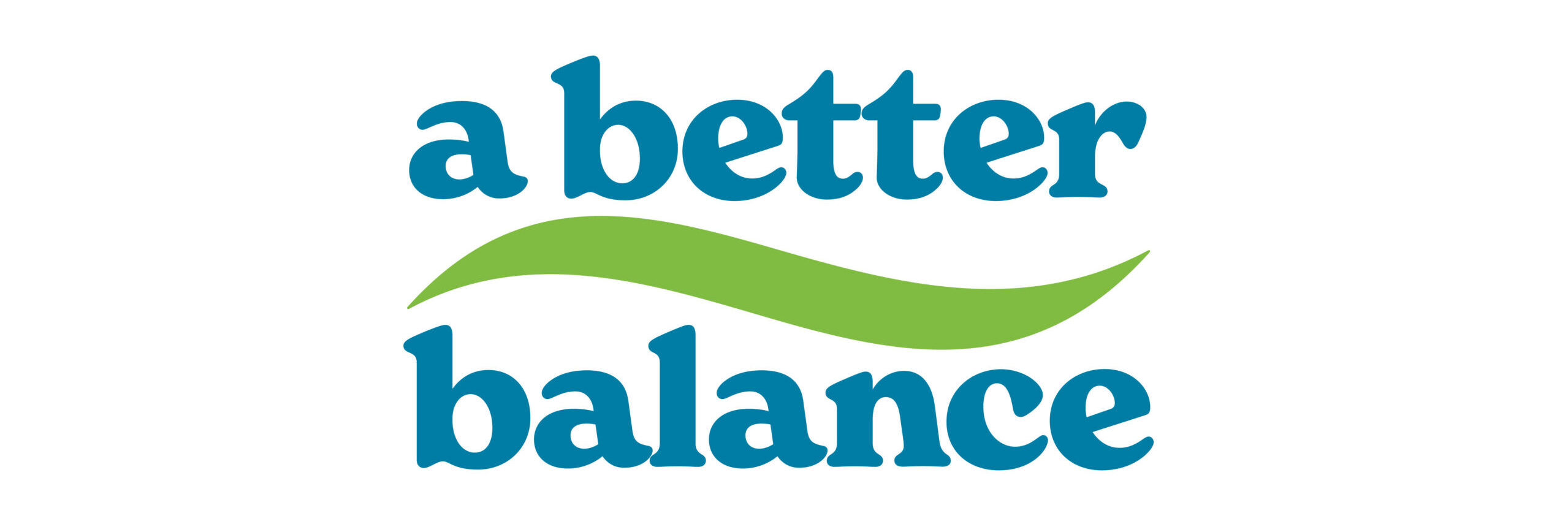At a Glance:
- The Pregnant Workers Fairness Act gives workers the right to receive reasonable accommodations, like light duty, breaks, or a stool to sit on, for pregnancy, childbirth recovery, and related medical conditions, including lactation, unless it would be an undue hardship on the employer.
- The law went into effect on June 27, 2023.
- Employees are also protected from retaliation under the law.
- Workers interested in learning more about their rights or seeking help can call A Better Balance’s free, confidential legal helpline at 1-833-NEED-ABB (1-833-633-3222) or fill out our online form.
- The Pregnant Workers Fairness Act’s passage is one of the biggest advances in civil rights law in decades.
The Pregnant Workers Fairness Act, or PWFA, is a landmark nationwide civil rights law that gives pregnant and postpartum workers the right to reasonable accommodations at work for pregnancy, childbirth, and related medical conditions. The PWFA ensures pregnant and postpartum workers are not forced off the job by guaranteeing them the accommodations they need to stay safe and healthy. The PWFA also protects pregnant and postpartum workers from discrimination or retaliation for needing accommodations.
The PWFA went into effect on June 27, 2023.
All employees (including federal, state, and local employees) who work for an employer with 15 or more employees are covered under the PWFA. There is no waiting period to receive accommodations–you can get reasonable accommodations as soon as you start work, or even sooner if you need accommodations during the application/hiring process.
Depending on where you work, there may be similar city or state laws like the PWFA that apply to smaller employers. Check out our Workplace Rights Hub for information about your state.
A reasonable accommodation is a change to an employee’s work environment, job duties, or schedule that they need to perform their job while keeping safe and healthy. Covered employers have to give reasonable accommodations requested by employees for pregnancy, childbirth, and related medical conditions unless it would be an “undue hardship” to the employer (see Question #4).
Examples of potential reasonable accommodations include (but are not limited to)…
- Light duty, including limiting or assisting with manual labor and lifting or climbing
- Temporary transfer to a less physically demanding or safer position (if there are no accommodations that would allow you to do your current job)
- Additional, longer, or more flexible breaks to drink water, eat, rest, or use the restroom
- Changing food or drink policies to you allow you to eat or drink water at your workstation
- Providing additional equipment, such as a stool to sit on at your workstation
- Making existing facilities easier to use, such as relocating your workstation closer to the restroom
- Changing a uniform or dress code, like allowing you to wear maternity pants
- Limiting exposure to hazardous chemicals and other workplace hazards
- Flexible/modified scheduling, such as for prenatal or postnatal doctor’s appointments or to accommodate morning sickness
- Remote work or telework
- Time off for prenatal appointments
- Leave or time off to recover from childbirth, even if you don’t qualify for leave under other laws like the FMLA
- Leave or time off for other pregnancy- or postpartum-related health issues, such as bedrest, recovery from miscarriage, postpartum depression, or mastitis
- Lactation-related accommodations, such as providing a worker break time to pump milk or creating a clean, private lactation space (that isn’t a bathroom). See Question #6 for more information about lactation-related accommodations.
…and many more. These are only examples, and there are plenty of other changes you could ask for at work to protect you and your pregnancy.
An accommodation is an undue hardship if it would be significantly difficult or expensive for the employer to provide the accommodation. The federal government has said that certain accommodations are almost never going to be an undue hardship to provide, and employers should grant them in virtually every case:
- The ability to sit down or stand up while working, as needed
- The ability to carry or keep water nearby and drink, as needed
- Additional restroom breaks, as needed
- Additional breaks to eat and drink, as needed
Other than these four accommodations, whether an accommodation is an undue hardship depends on the situation in your workplace. Undue hardship takes into account things like the cost of the accommodation, the size of your employer, and your employer’s financial resources. Just because employers have given an accommodation to another worker doesn’t automatically mean they have to give it to you. But, they would have to have a good reason why it would be too difficult or expensive to give you the same accommodation.
Employers have to be able to explain why a certain accommodation would be an undue hardship, and this is a high bar to meet. An accommodation is not an undue hardship if it will only be moderately difficult or expensive for your employer to provide. Employers may have to make exceptions to their usual policies to accommodate workers, and this isn’t automatically an undue hardship. “Unfairness” to other workers or concerns about employee morale are also not undue hardships.
No, you do not have to have a particular disability, medical condition, complication, or high-risk pregnancy to get a reasonable accommodation. Employees also have the right to reasonable accommodations for many common needs associated with pregnancy, such as…
- Lifting limits
- Limits on standing for a certain period of time
- Limits on walking certain distances
- The need for additional restroom breaks
- The need to consume more food and water
- The need for larger uniforms or safety equipment
…and more. If your employer asks you to confirm that you have a “pregnancy-related disability,” they may be misunderstanding the PWFA and applying a different law called the Americans with Disabilities Act (ADA). See Question #21 for more information about the differences between the PWFA and the ADA.
Yes. Producing breast milk or lactation is a medical condition related to pregnancy or childbirth, so employees can ask for accommodations related to nursing under the PWFA. Lactating employees may need accommodations to pump at work, prevent infections or mastitis, keep up their milk supply, and more. Some examples of lactation accommodations include (but are not limited to):
- Regular breaks to pump milk
- A private, non-bathroom space that you can pump in
- Temporary transfer to another position to prevent exposure to environmental hazards/chemicals, or to give you access to a pumping location
- Modifications to your uniform or equipment
- Schedule adjustments to accommodate pumping or direct nursing
You may also have a right to pump milk at work under another law called the PUMP Act. You can learn more about that law here.
It depends. The Pregnant Workers Fairness Act gives employees the right to accommodations for their own pregnancy-related health conditions (including lactation), but doesn’t extend to accommodations for their infant’s needs or convenience. If you need to directly breastfeed due to your own lactation-related condition that makes pumping unworkable (such as mastitis, bacterial infection, clogged milk ducts, or low milk supply) you could get accommodations for direct breastfeeding in order to protect your own health. However, if your infant has a condition that makes them unable to take a bottle (such as a tongue tie or bottle refusal), this isn’t necessarily covered.
There is one instance where the PWFA may support accommodations for direct breastfeeding even if there is no personal medical need for you to directly breastfeed. The federal government has said that if your infant is at or near your workplace, you can get breaks to directly feed them where they are as a reasonable accommodation.
Yes, your employer has to accommodate you even if they don’t accommodate other workers. If you are covered under the PWFA, your employer has a duty to accommodate you, no matter how other workers are treated. Covered employers can’t have a “no accommodation” policy or a “no restrictions” policy. This would be illegal under the PWFA and other laws.
If your employer is providing accommodations to other workers with needs like yours, that could make it harder for your employer to say that it would be too difficult or expensive for them to accommodate you (see Question #4 on “undue hardship”).
Sometimes, there isn’t a reasonable accommodation that will allow you to perform all of your job duties. But under the PWFA, as long as you are able to perform your job duties in the near future, your employer may have to accommodate you by excusing one or more of your job duties as long as it would not be an undue hardship (for information about undue hardship, see Question #4). Your employer may have to accommodate you even if the duty you can’t perform is one of your main job duties, called an “essential function.” This is one important way the PWFA is different from a similar law called the Americans with Disabilities Act (ADA), which doesn’t require employers to excuse any essential functions. For more on the differences between the ADA and the PWFA, see Question #21.
Some options to accommodate employees who can’t do all of their essential job functions include:
- Restructuring their job duties so they don’t have to do tasks that aren’t within their pregnancy restrictions (this is often called “light duty”)
- Assistance with certain tasks
- Temporary transfer to another position that they are qualified for
- Leave from work (but only if no other accommodation is available that will keep them on the job, for more information see Questions #15 and #16)
Keep in mind that there may be a time limit on this kind of accommodation if the job duty your employer is excusing is essential to your job.
If you aren’t sure if/when you will be able to do all of your job duties, or if your employer has said they won’t excuse you from performing an “essential function” as an accommodation, contact A Better Balance’s free and confidential legal helpline using our online form or call 1-833-NEED-ABB (1-833-633-3222).
Generally, you do need to let your employer know that you have a need related to pregnancy, childbirth, or a related medical condition in order to get accommodations. Your employer needs this information to know that you are covered by the PWFA, but that doesn’t mean you have to tell your direct supervisor or all of your coworkers. Your company may have a process that will allow you to work directly with HR or your company’s personnel department to request an accommodation, without having to go through your supervisor. If you are concerned about your privacy, ask HR what they will or won’t disclose to your supervisor as part of the accommodation process. To learn more about the kind of medical information you might have to provide to your employer and their responsibility to keep it confidential, see Question #13.
Many employees worry about telling their employer about their pregnancy because they think it might cause problems at work. However, under the nationwide Pregnancy Discrimination Act, it is illegal to discriminate against an employee because they are pregnant. Employers can’t take harmful actions against an employee just because they are pregnant—for example, by cutting their hours, demoting them, firing them, or harassing them. Employers also can’t decide not to hire or promote an employee because they are pregnant.
You don’t have to use the words “reasonable accommodation” or mention the Pregnant Workers Fairness Act to request an accommodation from your employer. You just have to let your employer know that you need an adjustment at work due to pregnancy, childbirth, or a related medical condition.
That said, it can sometimes be helpful to mention the law by name to make clear that you are requesting something that your employer may actually be legally required to provide. A Better Balance has provided sample letters that you can use to request accommodations and inform your employer about the Pregnant Workers Fairness Act here.
Check your company’s policies to see if there is a process you can use to request accommodations. If your employer has an HR or personnel department, you may want to start there.
Tip: It can be helpful to have conversations about accommodations in writing when you can, but this isn’t always possible. If you have a conversation with your boss or HR about accommodations, take careful notes during or after your conversation. Keep a copy of your personal notes, such as by emailing your notes to yourself using your personal (not work) email so that they are time stamped.
After you tell your employer about a limitation you have at work, your employer should start a conversation with you (known as the “interactive process”) to figure out the right accommodation. If you request a specific accommodation, they can always choose to grant that request without further discussion. They also may in some cases ask for medical documentation (see Question #13) or suggest other accommodations that could work (see Question #14).
Either way, your employer must respond to your request as soon as they can. If your employer is not responding to your accommodation request, contact A Better Balance’s free and confidential legal helpline using our online form or call 1-833-NEED-ABB (1-833-633-3222).
The interactive process can occur by phone, over email, or in other ways. For example, HR might have a meeting with a pregnant worker requesting accommodations to discuss what job duties the employee can safely do, or talk about available positions that the employee could temporarily transfer to.
Employers can’t require employees to accept an accommodation without going through the interactive process first. They should also consider providing you with an “interim accommodation” while the interactive process is happening so you can keep working in the meantime, because requiring an employee to take leave or firing them when an accommodation exists that would allow them to work instead is illegal. See Question #15 for more about forced leave.
Not always. Employers can’t request documentation they don’t actually need. For small or obvious accommodations, it may be unreasonable to request documentation at all. The federal government has said that employers may never ask for documentation for the following accommodations:
- The ability to sit down or stand up while working, as needed
- The ability to carry or keep water nearby and drink, as needed
- Additional restroom breaks, as needed
- Additional breaks to eat and drink, as needed
For other accommodations, employers may be able to ask for documentation explaining that…
- the worker has a limitation or need related to pregnancy, childbirth, or a related medical condition (including how long it will last, even an estimate, if known), and
- the worker needs accommodations.
If you do have to provide medical documentation, you don’t have to share your complete medical records or even your diagnosis. It should be enough for your healthcare provider to confirm that you have a need related to pregnancy, childbirth, or a related medical condition.
If your employer requests it, you likely have to provide documentation about your needs/limitations. The more specific your healthcare provider can be about what you need, the better. For example, instead of just saying you need to be on “light duty,” your healthcare provider could provide an exact lifting limit, say how often you will need breaks, specify how many hours you can spend on your feet each day, or say how many hours you can work a week. Your healthcare provider can also recommend accommodations, but your employer can propose alternative accommodations (see Question #14). That’s why it’s so important to be specific about your restrictions, since you don’t want your employer to offer you an accommodation that doesn’t meet your health and safety needs.
Your employer should keep medical information you share with them private. Medical information you share with your employer in order to get accommodations is confidential, and your employer can only share this information with other employees (including your supervisor) on a need-to-know basis. For example, your supervisor may need to know that you have been given accommodations, but they don’t always need to know what your condition is and shouldn’t talk about your accommodation with your coworkers.
Your employer also can’t require you to prove that you have a “disability” to get accommodations (for more about the difference between pregnancy and disability accommodations, see Question #21). Some employers use the same paperwork for disability accommodations and pregnancy accommodations. This paperwork may ask questions that your healthcare provider doesn’t know how to answer, because they don’t apply to you.
If your employer is asking for medical documentation and it’s too difficult for you to get or you aren’t sure how your doctor should answer the questions they are asking, contact A Better Balance’s free and confidential legal helpline using our online form or call 1-833-NEED-ABB (1-833-633-3222).
If you request a particular accommodation, your employer can grant you the accommodation you asked for, or they can suggest other accommodations. The PWFA doesn’t require an employer to provide the exact accommodation an employee wants, even if the employee’s preferred accommodation isn’t an undue hardship. The preference of the worker seeking accommodations should be considered, but if there is more than one accommodation that will work, employers can choose the accommodation that is easier for them.
However, your employer must give you an effective accommodation. An accommodation is effective only if it gives you equal opportunity to perform your job or achieves the same objective as the accommodation you requested. Employers have to prioritize accommodations that keep you working in your current role–your employer also can’t transfer you to another position if there is another accommodation that will allow you to effectively do your current job.
For example, if your job keeps you on your feet but you get dizzy when you stand for too long, you might ask your employer for additional breaks whenever you get dizzy. Your employer could suggest the alternate accommodation of temporarily transferring you to a different job that allows you to sit down when you need to. You may have to accept this accommodation instead, but only if sitting down is enough to prevent your dizziness (and the transfer doesn’t make you worse off). Employees have a right to an accommodation that meets their needs, unless it would be extremely difficult or expensive for their employer (see Question #4 on “undue hardship”).
No. Your employer can’t put you on leave if there is any other reasonable accommodation available that would address your pregnancy- or childbirth-related needs without causing undue hardship. If your employer is trying to force you on leave, contact A Better Balance’s free and confidential legal helpline using our online form or call 1-833-NEED-ABB (1-833-633-3222).
Yes, leave or time off can be a reasonable accommodation unless it would be extremely difficult or expensive for your employer to provide (an “undue hardship,” see Question #4 for more information). You may be able to get leave as an accommodation for pregnancy, childbirth, or related medical conditions even if you don’t have access to leave under other laws, such as the federal Family and Medical Leave Act (see Question #20) or other state laws. However, employers can’t force an employee to take leave if any other accommodation is available that would allow the employee to continue working, up to and including temporary transfer to a different role. Employers also may not penalize employees for using leave they have been granted as an accommodation, such as by writing them up or giving them absence points/occurrences (see Question #19 for more information about retaliation).
You can seek leave in any amount that you need it for–anywhere from a few hours to weeks or months, depending on your needs. Leave provided as an accommodation does not need to be paid. However, you may have a right to paid leave or sick time under state law. Learn more about leave laws in your state here.
Keep in mind that employees can only get accommodations for their own health and safety needs, not the needs of their infant. Some examples of reasons an employee could get leave or time off include:
- Prenatal appointments
- Pregnancy-related conditions that make you unable to work (such as morning sickness or doctor-prescribed bed rest)
- Recovery from childbirth
- Recovery from postpartum conditions, including mental health conditions
Also note that your employer may be able to ask for medical documentation supporting your need for leave as an accommodation. However, employers can only ask for “reasonable” documentation. It may not always be reasonable to ask for documentation for every use of leave–for example, if you get a note from your doctor saying you need occasional time off for morning sickness, your employer can’t ask you to get a note from your doctor every time you miss work due to morning sickness.
The PWFA does not place any time limits on how long an employee should be accommodated. As long as you have ongoing health or safety needs due to pregnancy, childbirth, or a related medical condition, you have a right to reasonable accommodations.
However, if the accommodation you are receiving impacts your ability to do a key or essential function of your job, your employer may only have to give you that accommodation temporarily. See Question #9 for more information.
All covered workers have a right to reasonable accommodations, unless they would be an undue hardship. If your employer denies your accommodation request, contact A Better Balance’s free and confidential legal helpline using our online form or call 1-833-NEED-ABB (1-833-633-3222).
If you feel comfortable, you can tell your employer more about the PWFA. Your employer may not be aware of your rights, or they may be more willing to work with you once you show them that the law is on your side. A Better Balance has created sample letters you can send to your employer to request an accommodation and inform them of your rights, available here.
The Equal Employment Opportunity Commission (EEOC) is the federal agency responsible for enforcing the PWFA. If you are covered by the PWFA and your employer does not provide you with reasonable accommodations after you ask for them, you have the option to file a charge with the EEOC.
All covered workers are protected from being punished or fired for requesting or using a reasonable accommodation. This is called retaliation, and it is illegal. If you have a problem with your employer after requesting accommodations, contact A Better Balance’s free and confidential legal helpline using our online form or call 1-833-NEED-ABB (1-833-633-3222).
Employers can’t retaliate against you for requesting or using an accommodation. Even if your employer accommodates you, they are breaking the law if they follow by punishing you or taking harmful employment actions against you because you requested an accommodation. For example, if your employer agrees to give you additional breaks, but then starts to cut your hours or schedule you for fewer shifts, this could be a violation of the PWFA.
If you think your employer is retaliating against you for requesting an accommodation, you have the option to file a charge with the Equal Employment Opportunity Commission (EEOC), the federal agency in charge of enforcing the PWFA.
The Family and Medical Leave Act, or FMLA, is a nationwide law that gives eligible workers the right to up to 12 weeks of unpaid time off for their own serious health condition, to care for a family member with a serious health condition, or to bond with a new child. To be eligible, a worker must generally meet the following requirements:
- They must work for an employer who has at least 50 employees within 75 miles of their worksite
- They must have worked for their employer for at least 12 months
- They must have worked at least 1,250 hours for their employer in the last 12 months
Pregnancy is considered a serious health condition, so if an employee needs time off due to pregnancy-related illness (such as severe morning sickness) or to attend prenatal appointments, they can get leave from work under the FMLA. Keep in mind that any FMLA leave you take before giving birth may reduce the amount of FMLA leave you can take after giving birth to bond with your child. Based on where you work, there may be laws that give you a right to additional unpaid leave or even paid leave. You can learn more about the laws in the state where you work here.
If you are not eligible for FMLA or need more than 12 weeks off, you may be able to get leave as a reasonable accommodation through the PWFA (see Question #16). Keep in mind that the PWFA only gives workers the right to accommodations for their own pregnancy- and childbirth- related health needs, so you won’t be able to get leave as a reasonable accommodation to bond with your child. You have a right to get leave due to pregnancy-related illnesses, or to physically recover from childbirth (unless it would be an undue hardship for your employer to provide). However, you don’t have a right to accommodations to bond with your new child, so unless you are covered under the FMLA your employer does not have to give you additional leave to spend with your baby.
The Americans with Disabilities Act (ADA) is another nationwide law that applies to employers with 15 or more employees. Similar to how the PWFA provides reasonable accommodations for pregnant and postpartum workers, the ADA gives employees with disabilities the right to reasonable accommodations. Your employer probably already knows about the ADA because it has been around for longer, so they may think the same rules apply. But the PWFA goes further than the ADA in several important ways:
- The ADA requires employees to have a disability to get accommodations. Pregnant and postpartum workers do not need to have a disability to get accommodations under the PWFA. Employers have to accommodate the common health and safety needs of pregnant and postpartum workers (like lifting limits, pregnancy-related illnesses, more restroom breaks, or increased food/water intake).
- The PWFA requires employers to accommodate employees who can’t do all of their job duties, even “essential functions,” as long as they can do all their essential job duties in the near future. See Question #9 for more information about your rights if you can’t perform all of your job duties.
- The PWFA says that employers can’t force employees to take leave if they can accommodate them some other way. See Question #15 for more information about forced leave.
Employers might give you ADA forms to fill out when you request an accommodation under the PWFA. You can explain to your employer that these forms don’t apply to you, especially if they ask you to say that you have a “disability” or discuss how your condition “substantially limits major life activities” (which is how “disability” is defined in the ADA). For more about medical documentation, see Question #13.
Some pregnancy- or childbirth-related conditions can also be disabilities. This includes conditions you had before that got worse because of pregnancy or childbirth. If you have this kind of condition, you may be able to get accommodations under both the ADA and PWFA.
Other than the Pregnant Workers Fairness Act, a few other laws can give pregnant and postpartum workers additional rights:
- The PUMP Act, which gives employees the right to take breaks to pump milk at work, and the right to a clean, private space to pump. See Question #6 for more information.
- The Family and Medical Leave Act (FMLA), which gives eligible employees the right to take up to 12 weeks of leave from work each year for certain purposes. See Question #20 for more information.
- The Pregnancy Discrimination Act (PDA), which makes it illegal to discriminate against a worker because of pregnancy, childbirth, or a related medical condition.
- Americans with Disabilities Act (ADA), which gives most employees the right to reasonable accommodations for disabilities, including pregnancy-related disabilities. See Question #21 for more information.
State and local pregnant workers fairness acts, paid family and medical leave laws, paid sick time statutes, and anti-discrimination laws can provide further protections.
Do you believe your rights have been violated or want more information?
Contact A Better Balance’s free and confidential legal helpline using our online form or call 1-833-NEED-ABB (1-833-633-3222).




